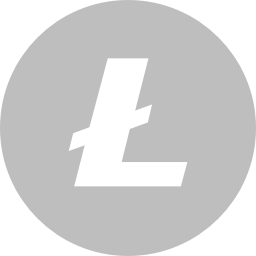Litecoin (LTC): Bitcoin’s little brother
 Litecoin (LTC) is like Bitcoin a 1.0 blockchain. In a nutshell, this means that Litecoin is only set up as a means of payment. There is no huge underlying blockchain on which DApps can be built and application developers have no business here. It’s all about the coins. Litecoin mainly wanted to be an answer to the criticism that Bitcoin had to deal with, but eventually grew into an independent and autonomous project. Without constantly being the ‘silver’ to Bitcoin’s ‘gold’.
Litecoin (LTC) is like Bitcoin a 1.0 blockchain. In a nutshell, this means that Litecoin is only set up as a means of payment. There is no huge underlying blockchain on which DApps can be built and application developers have no business here. It’s all about the coins. Litecoin mainly wanted to be an answer to the criticism that Bitcoin had to deal with, but eventually grew into an independent and autonomous project. Without constantly being the ‘silver’ to Bitcoin’s ‘gold’.
LTC versus BTC
Litecoin (LTC) was launched only two years after the introduction of Bitcoin, making it one of the oldest ‘altcoins’. The founder is Charles “Charlie” Lee, who foresaw a number of problems with Bitcoin. However, he did use the Bitcoin-Qt as a basis, and changed a number of elements that made this currency fundamentally different from its “big brother”.
Charles reduced the block time from 10 minutes to 2.5 minutes, increased the number of coins, and Litecoin uses the Scrypt protocol where Bitcoin uses SHA-256. The idea behind it is clear: much faster transactions and better scalability than Bitcoin. Especially after the implementation of the SegWit protocol in April 2017, which improved the scalability even more.
Litecoin was never meant to be a competitor to Bitcoin. Rather, it is an alternative to be used for smaller payments. The transactions are cheaper and faster than with Bitcoin, which is used more for the larger payments. It does not have to be a competition between the two, and this was never Charlie Lee’s intention.
Is Litecoin going to change the future?
Litecoin has shown that it is a strong cryptocurrency for an Altcoin. This is partly due to the role of the founder. Charlie Lee has worked at Coinbase, but came back to work to further realize the adoption of Litecoin (LTC). The development of Litecoin consists mainly of carefully adding the developments of Bitcoin. Charlie Lee’s tweets and the active community ensure that this coin is constantly in the spotlight, despite the fact that there are no “smart-contract” possibilities behind the coin, as is the case with the blockchain 2.0 and 3.0 projects.
This cryptocurrency has remained interesting. Microtransactions are done much more often than large payments. When making small payments, the transaction costs are much more important, as is the speed of the transactions. The big question is if there are other blockchain applications that serve the same market. At this moment Litecoin is still dominant in terms of market capitalization, which makes the currency more interesting for investors. Just like the age of the currency of course, which contributes to the fact that LTC is often accepted as a means of payment and that it is also relatively easy to buy. Even when you don’t have the technical knowledge or a wallet.
Charlie Lee, who talks about future developments in Litecoin in the interview below from March 2019, clearly indicates that he is aware of the opportunities, challenges and possibilities that Litecoin has. And Litecoin (LTC) certainly has that when this founder is still the man behind the coin.